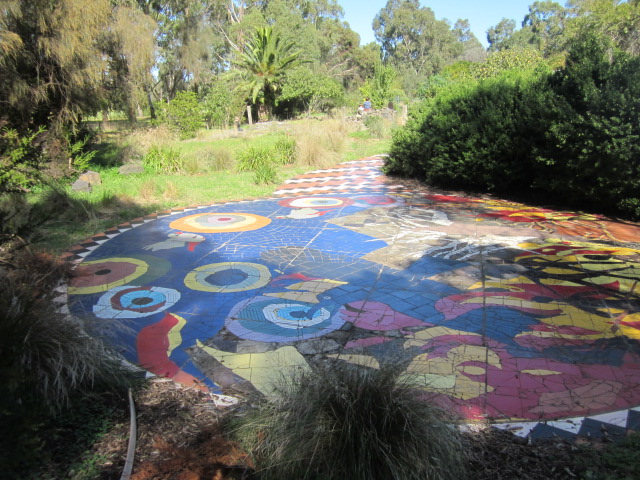Pipemakers Park (Maribyrnong)


Pipemakers Park is part of the Maribyrnong River valley and is one of Melbourne's oldest industrial sites. Pipemakers Park is a historic pipemaking industrial site which has been transformed into a park and wetlands. Historic bluestone factories have been recycled for community use. A wharf has been built, wetlands created, barbecues and picnic tables installed and an important link formed in the Maribyrnong River trail. The multi-use trail leads 15 kilometres upstream to Brimbank Park, East Keilor, and four kilometres downstream to the Stock Bridge at Kensington.
Things to Do
- Approached from a steep hill, the park has distant river views towards Flemington Racecourse and the city.
- Innovative landscaping retains the theme of the previous industrial history of the site.
- The main feature is the Living Museum of the West housed in a revamped factory, which provides information for self-guided tours and hosts a number of exhibitions, activities and special presentations on the cultural history of western Melbourne and the Maribyrnong River.
- Try fishing from the wharf.
- Go for a boat ride on the Maribyrnong River.
- Sit and relax in the pioneer womens shelter.
- Watch the bird life and look for tadpoles or listen to frogs amongst the reeds in the wetlands.
- Follow the path past the factory shed.
- See historic bluestone buildings.
- Take in Aboriginal history.
- Sealed and unsealed walking tracks through the park link with the Maribyrnong River trail.
- A fantastic playground
Facilities
- There are facilities for picknickers within the park such as free electric barbecues, picnic tables and toilets with disabled access.
- Sealed multi purpose tracks and Information Centre are also available.
Heritage
Meat Cannery
Three bluestone buildings and chimney remains survive from the days when this was Australia's largest meat cannery. The large bluestone building was the preserving department, including cooking, filling of the tins, heat processing, final sealing and cooling. The building next door was the tinsmiths' workshop and machinery room. The third bluestone building, now the Visitor Centre, was the boiling-down department and store, where tins were painted, labelled and packed ready for shipment down the river to the port for export overseas. The meat cannery closed in 1886.
Hume Pipes
In 1912, Walter Hume took over the bluestone buildings, establishing a concrete pipe factory. In the 1920s-1940s additional sheds were added. The Hume firm became the largest concrete pipe firm in Australia, exporting its pipe technology across the world. The Maribyrnong factory moved to Laverton in 1978.
Fauna
Bird life abounds in Pipemakers Park and along the Maribyrnong River. White-faced Herons, Black Ducks and Swamp Hens wade and feed on the banks of the river and in heavily wooded sections of the park. Between September and January, you may be lucky enough to catch a glimpse of Sacred Ibis as they nest and feed in the shallows. Pipemakers is also home to the Growling Grass Frog Litoria raniformis.
Vegetation
Pipemakers Park has a wide range of native plants. River Red Gums, sheoaks, wattles trees and a number of eucalypt varieties may be seen and also Cumbungi (native reeds) in the wetlands and Kangaroo Grass and Poa Grass.
How to Get There
Pipemakers Park is situated in Maribyrnong. Cars enter from Gordon Street near Highpoint Shopping Centre entrance.
Opening Hours:
24/7 access
Review:
This park has lots of elements. There are a series of gardens with different themes but all with lots of beautiful and interesting mosaics.
There is a pedestrian bridge across the Maribyrnong River. Across the river is a shelter with table, water tap and unshaded table. There are bike paths on this side of the river also.
There is a small wetlands area with ducks and other water birds. The water was covered in lots of algae which provides your best chance of ever successfully walking on water. Above this area are some shelters with tables, BBQs, toilets and water tap. The area houses the Living West Museum which has limited opening hours. You can also get tea and coffee at the museum. There is a Meat Trail which you can follow with the help of a brochure (which wasn't available when we were there). There are also the remains of some buildings associated with the pipe making operations in the past.
Photos:
Location
32 Van Ness Avenue, Maribyrnong 3032 Map
Web Links
→ Friends of the Maribyrnong Valley









